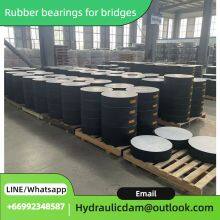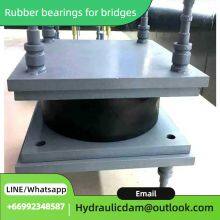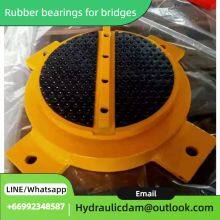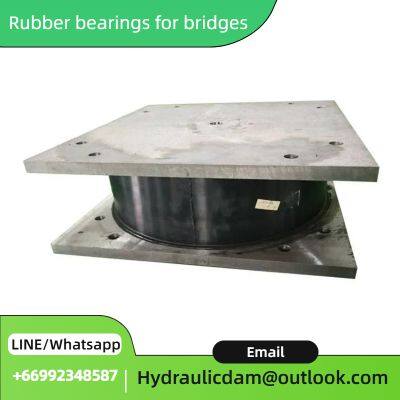Lead Core Bridge Rubber Bearing | Seismic Isolation Elastomeric Pad | Natural Rubber Material for Bridge Engineering
Load Transfer: Distributing vertical, horizontal, and rotational forces evenly across structures.
Seismic Isolation: Mitigating earthquake-induced vibrations by absorbing and dissipating seismic energy.
Vibration Damping: Reducing dynamic loads caused by traffic, machinery, or wind.
Structure: Comprises alternating layers of rubber and thin steel plates, significantly enhancing vertical load - bearing capacity while maintaining horizontal flexibility.
Application: Widely used in bridges, high - rise buildings, and large industrial structures.
Benefits: High durability, excellent load distribution, and long - term stability.
Structure: Integrates a lead core within a laminated rubber bearing, providing additional energy - dissipation capabilities.
Application: Ideal for seismic - prone regions, as the lead core deforms plastically during earthquakes to absorb energy.
Benefits: Superior seismic resistance, self - centering ability, and enhanced shock absorption.
Material: Made from natural rubber, offering high elasticity and good resilience.
Application: Suitable for low - to medium - load applications where environmental compatibility and cost - effectiveness are priorities.
Benefits: Excellent fatigue resistance, good performance at low temperatures, and eco - friendly.
Material: Utilizes synthetic rubbers (e.g., neoprene, EPDM) with customized properties.
Application: Preferred in harsh environments due to enhanced chemical resistance, weatherability, and aging resistance.
Benefits: High durability in extreme temperatures, resistance to ozone, UV, and chemicals.
Bridge Engineering: Supports bridge girders, absorbs traffic - induced vibrations, and accommodates thermal expansion/contraction.
Building Construction: Provides seismic isolation for high - rise buildings, reduces floor vibrations, and enhances structural stability.
Industrial Equipment: Cushions heavy machinery, minimizes operational vibrations, and protects equipment from damage.
Marine Structures: Used in docks and piers to withstand wave forces and vessel impacts.
High Elasticity: Rubber's natural flexibility allows for large deformations without permanent damage.
Cost - Effective: Lower installation and maintenance costs compared to metallic bearings.
Corrosion Resistance: Rubber is immune to rust and corrosion, extending service life in various environments.
Customizability: Dimensions, load - bearing capacity, and material properties can be tailored to specific project requirements.
Environmentally Friendly: Many rubber bearings are recyclable, reducing environmental impact.




Send Inquiry to This Supplier
You May Also Like
-
Reliable Gabion Mesh Manufacturer & Exporter | Customized Sizes for Erosion ControlUS$ 2.79 - 3MOQ: 40 Square Meters
-
Premium Gabion Cage Suppliers | ISO-Certified Materials for Hydraulic Engineering ProjectsUS$ 2.79 - 3MOQ: 40 Square Meters
-
Premium Rubber Waterstop Supplier - Your Trusted Source for Quality Sealing SolutionsUS$ 26 - 28MOQ: 100 Meters
-
Rubber Waterstop Provider: Extensive Range for Construction and Infrastructure ProjectsUS$ 26 - 28MOQ: 100 Meters
-
Leading Rubber Waterstop Supplier - Exceptional Quality for Leak - Proof ApplicationsUS$ 26 - 28MOQ: 100 Meters
-
Professional Rubber Waterstop Suppliers - Meeting All Your Waterproofing NeedsUS$ 26 - 28MOQ: 100 Meters
-
High-Performance Rubber Water Stop Strip: Your Ultimate Solution for Superior WaterproofingUS$ 24 - 26MOQ: 100 Meters
-
Premium Quality Rubber Water Stop Strip - Reliable Sealing for Construction JointsUS$ 24 - 26MOQ: 100 Meters
-
Flexible & Durable Rubber Water Stop Strip: Ensuring Long-Lasting Leak PreventionUS$ 24 - 26MOQ: 100 Meters
-
Professional-Grade Rubber Water Stop Strip: Engineered for Effortless Installation & Maximum ProtectionUS$ 24 - 26MOQ: 100 Meters




















